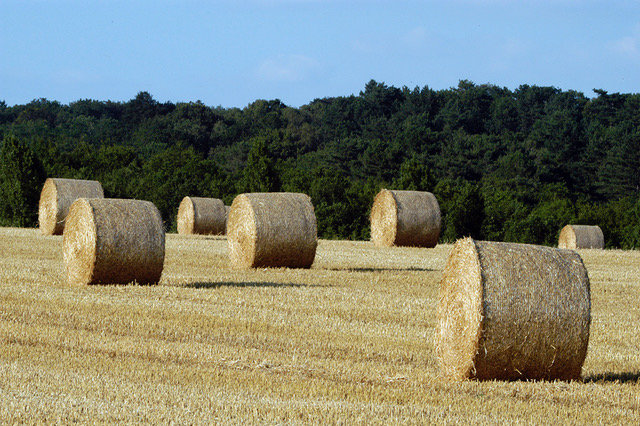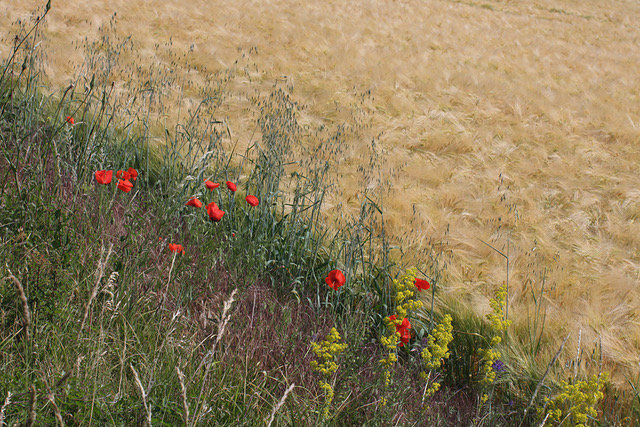The farm today
Audren de Fréminville - Preuilly March 2025
In Preuilly, the history of agriculture is deeply intertwined with that of the monastery. As the first stones of the abbey were laid, the first furrows were drawn, installing the same founding momentum into the land. And while today’s 560-hectare farm cannot compare to the vastness of the estate once shaped by the monks, it is touching to think that these fields have been serving Preuilly for nearly nine centuries.
Founded in 1118, the Cistercian abbey of Preuilly played a major role in developing agriculture in the region. Supported by generous donations and royal favor, it built a vast estate that the monks, assisted by lay brothers, developed with rigor and ingenuity. Barns, farms, mills, and tile works then dotted the landscape, ensuring both the monastery’s self-sufficiency and the economic prosperity of the surrounding lands. This model of organization—both spiritual and pragmatic—allowed the abbey to shine far beyond its walls and left a lasting mark on the region.
After the French Revolution, the estate was divided into five lots, which Dr. Henri Husson began to repurchase in 1824. His son, Georges, continued this reunification effort and restored the Preuilly estate to its entirety by 1866.
The land was then leased to Mr. Bouchet, who was regularly honored by the Agricultural, Science and Arts Society of Meaux and awarded the Departmental Honor Prize in 1868. Under his stewardship, Preuilly became a true agricultural model. The farm at that time included fifteen workhorses, between 900 and 1,000 sheep—“prize awarded in many competitions”—as well as a stable of thirty cows, crossbred between the Cotentin breed and Dutch bulls: “healthy, well-shaped, good milkers, proving clearly that quality breeding was not limited to Normandy or far from Paris.”
The estate also comprised 245 hectares “dedicated to large-scale cultivation of wheat, oats, barley, beets, potatoes, and all kinds of fodder. If one wants to see a great harvest, they must go to Preuilly—everything there is remarkable.”

It was during this time that Robert Husson decided to devote himself to breeding pointers. Preuilly soon became a renowned name in the field of dog breeding, a tradition later continued by his son Gérard.
After World War I, Robert Husson chose to farm the family land himself. Upon his death, his son Gérard—though destined for a promising military career—followed his heart and took over the farm, creating the Société Civile et Fermière de Preuilly (SCF) to simplify the estate’s management.
In 1948, Paul Tual, a young agricultural engineer, came to Preuilly for an internship. He would never leave. In 1950, he married Marie-Louise Husson, Gérard’s daughter, and actively contributed to modernizing the farm. At that time, the farm covered 375 hectares and still had eleven teams of three horses, thirty dairy cows, and four hundred sheep. Gradually, the horses were replaced by tractors, allowing the drivers to either complete their careers or retrain as mechanics. The cows were suppressed in the 1970s, while the sheep remained until the 1990s thanks to the dedication of Henri Linais, Preuilly’s last shepherd.
A visionary, Paul introduced corn cultivation and equipped the farm with its first grain dryer. Thanks to his expertise, his commitment to the land, and his rigorous management, Preuilly regained its status as a model farm in the region.
In the 2000s, the Preuilly Stud Farm (Haras de Preuilly) was created under the leadership of Patricia Husson. This breeding program for Selle Français horses quickly became a reference in show jumping, ultimately reaching the French national team level at the Rio Olympics in 2016, thanks to Rubis de Preuilly, ridden by Cédric Angot.

In 2017, led by Audren Husson, the SCF of Preuilly committed herself firmly to an ecological transition by converting to organic farming—not as a step backward, but as a conscious and demanding progression.
This farming method, respectful of living systems, is in phase with the spirit of Preuilly: a place where both the land and balance are cultivated, where both material and meaning are nurtured. Organic farming here is a way of embracing the long term, reconnecting with our five senses and a certain sense of harmony, taking care of the land, of those who tend it, and of those it feeds.
In 2020, to better adapt its tools to modern production needs, the farm moved from the abbey grounds to the outbuildings of the “Ferme de Gratteloup.”
The next major challenge for the SCF of Preuilly will be to combine organic farming with soil conservation agriculture, in order to sustainably preserve biodiversity while continuing, in our own way, the work begun by the monks.